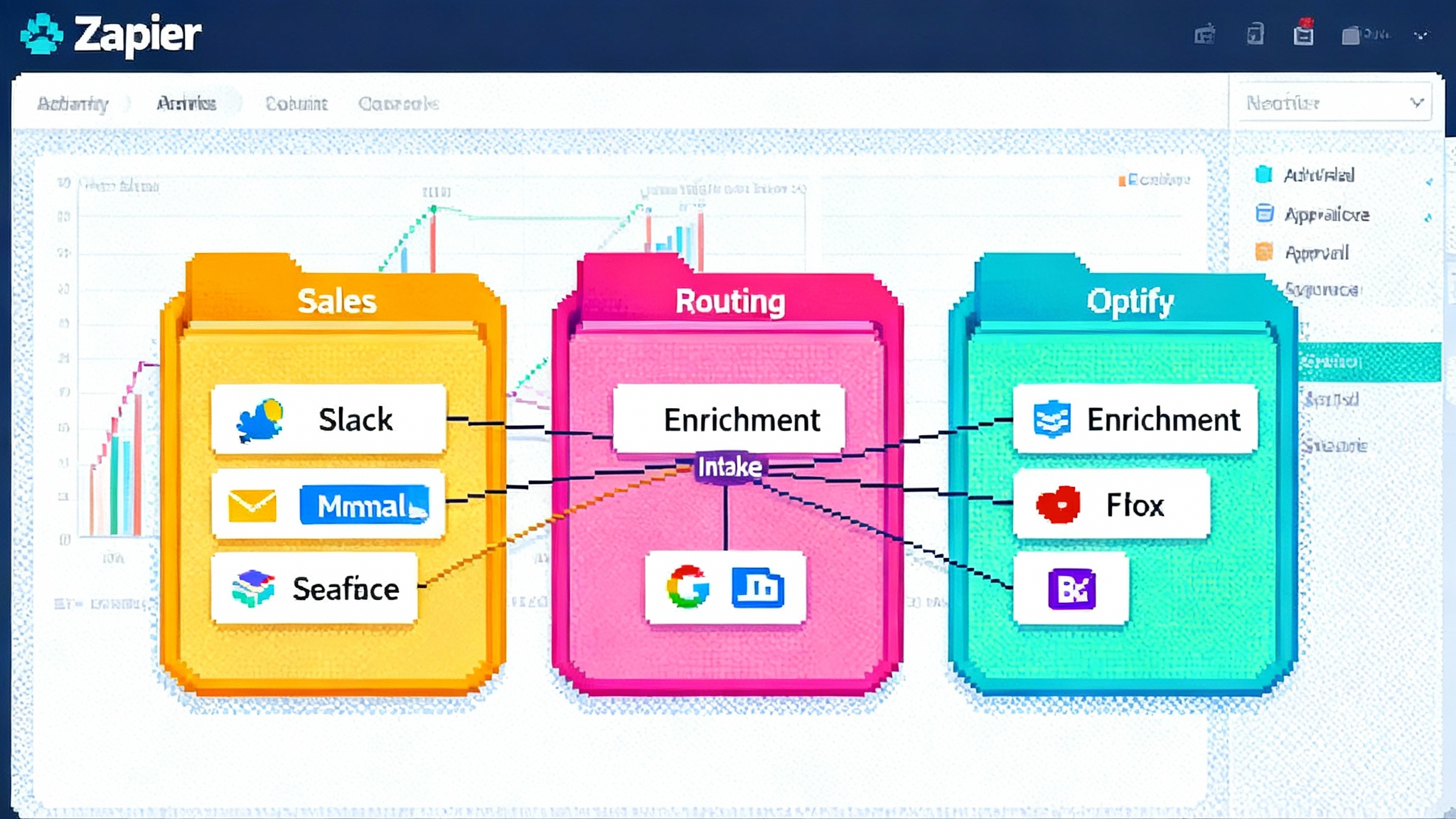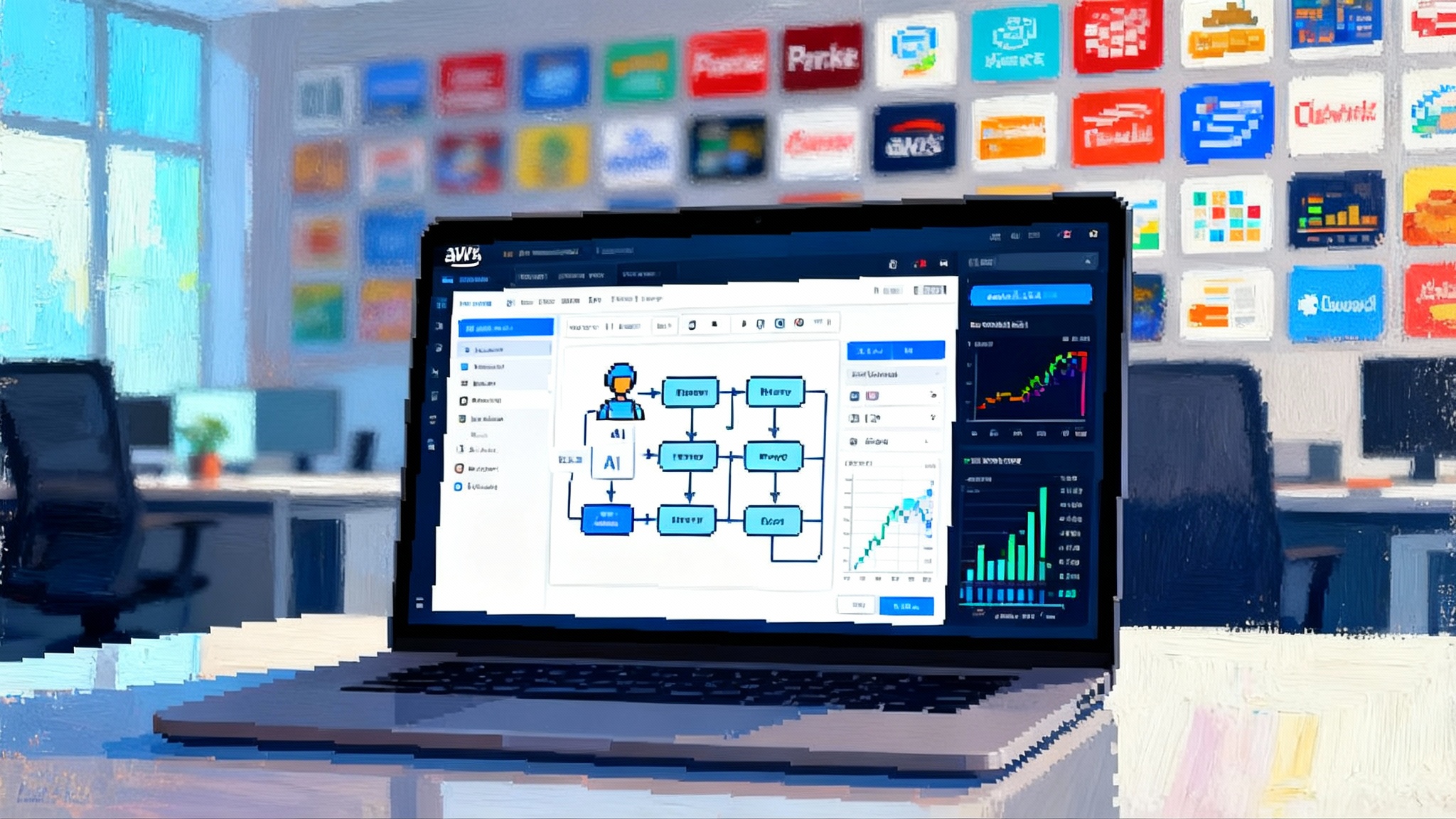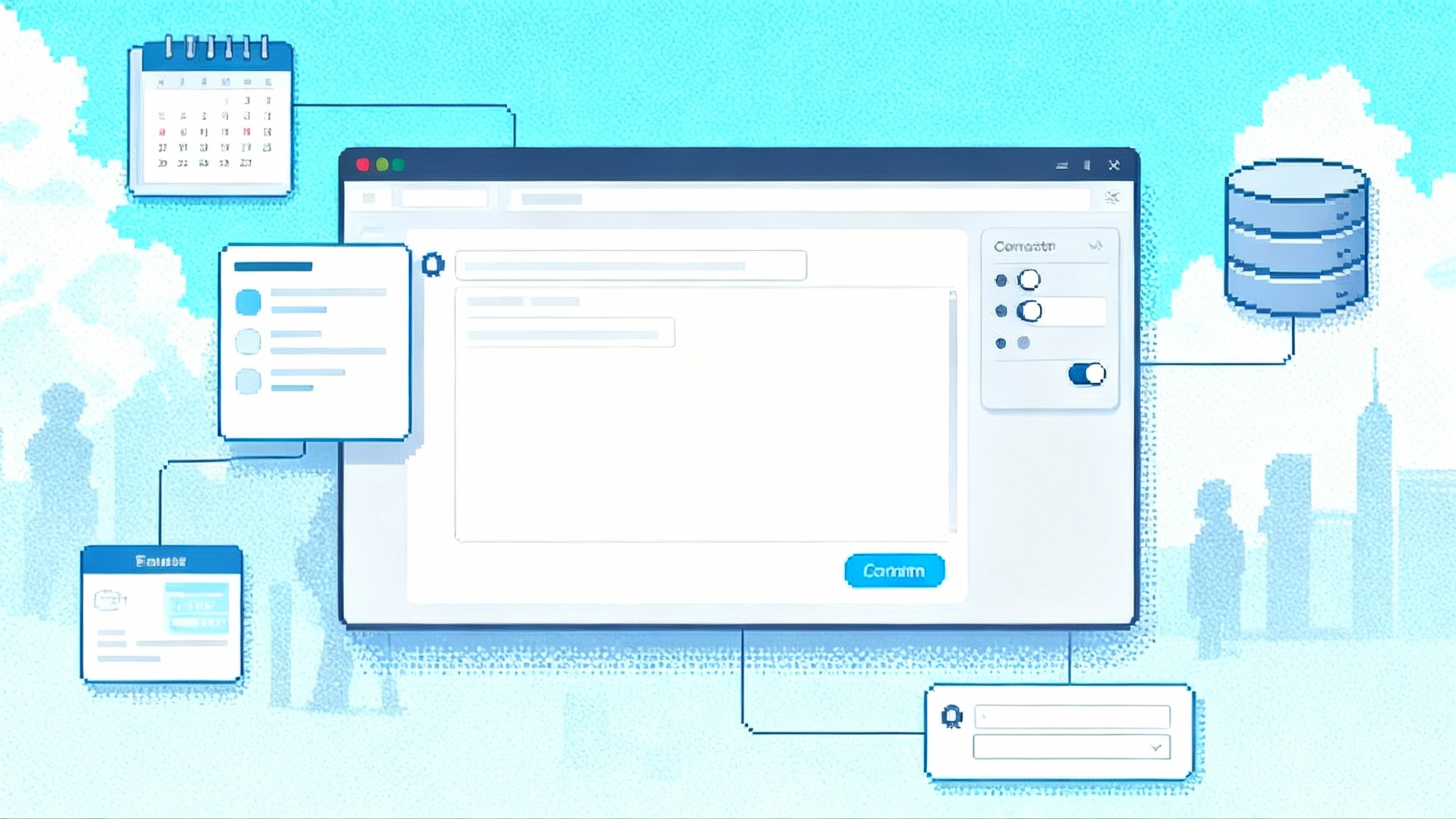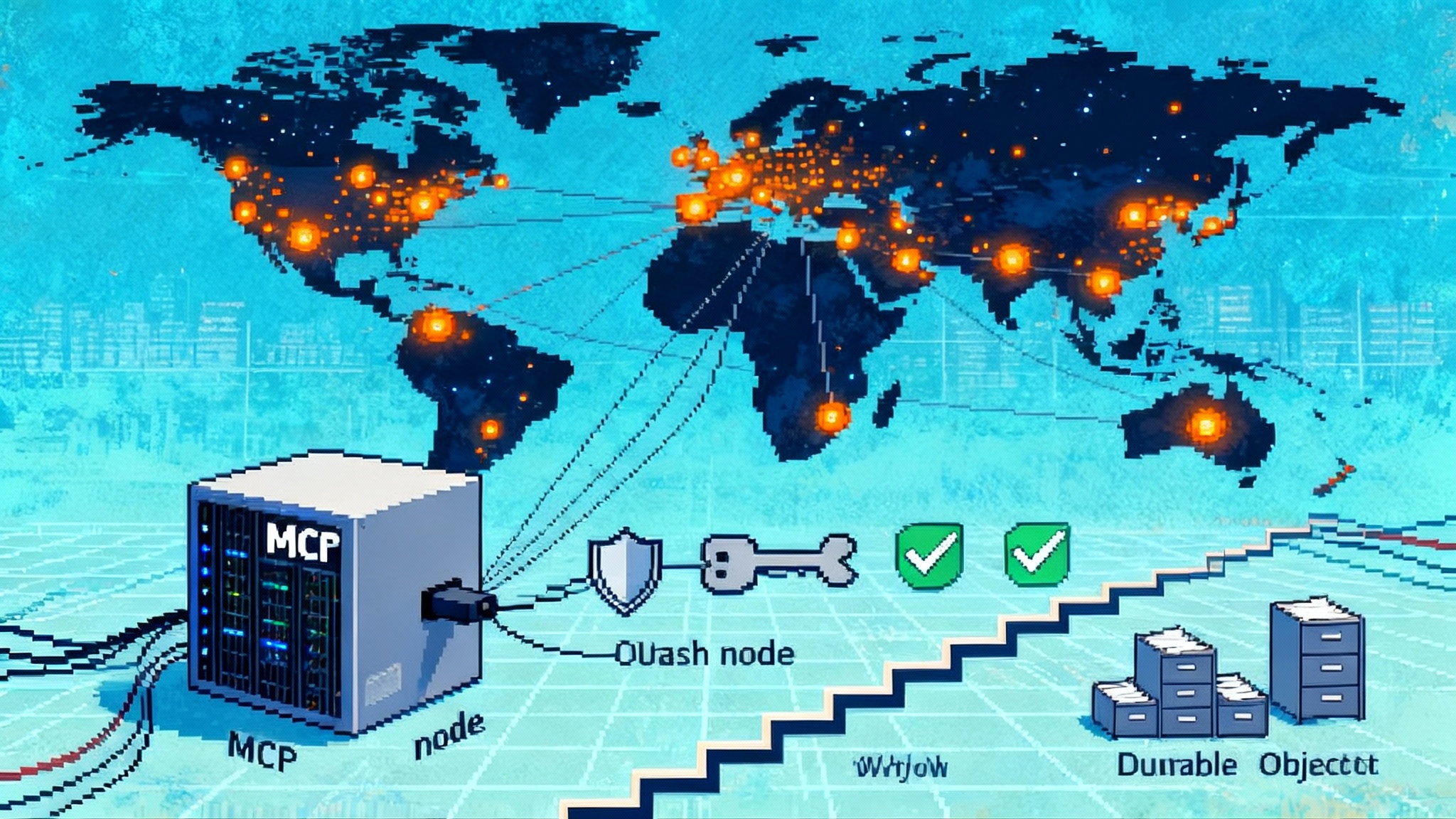Zapier Agents Grow Up: AI Teams You Can Actually Ship
Zapier just moved agents from chat toys to real teammates. With agent-to-agent calling, pods, and live knowledge, ops teams can orchestrate multi-agent workflows across favorite apps and ship with confidence.

Your no code automations can finally act like a team
Zapier’s newest upgrades push agents from novelty to necessity for operators. In August and September 2025, Zapier rolled out three changes that matter for production work: agent to agent calling, pods for grouping and governing agents, and live knowledge sources that pull facts from files in Box, Dropbox, and Google Drive at run time. The headline is simple. Instead of one generalist trying to do everything, you assemble a small crew of specialists that coordinate, consult shared context, and finish the job. Zapier’s own write up, Zapier Agents now work together, points squarely at real processes rather than demos.
If you run operations inside a growing company, this is a turning point. You can stitch multi agent workflows across thousands of apps without hiring a machine learning engineer or refactoring your stack. The same Zapier you already trust for leads, tickets, sheets, and chat can now orchestrate agents that carry work to completion with approvals and traceability.
What changed and why it matters
Think of three new capabilities as the legs of a sturdy tripod.
- Agent to agent calling
- One agent can delegate a subtask to another, receive a structured result, and continue. This replaces long, brittle prompts with clean, testable steps.
- Example: An Intake agent calls Enrichment, which calls Routing, which calls Notify. Each agent owns a narrow job and a small set of tools.
- Pods
- A pod is a container for related agents with shared oversight. It maps to how teams operate. Marketing might live in one pod, Customer Operations in another.
- You review activity at the pod level, assign owners and reviewers per pod, and promote mature agents to a production pod.
- Live knowledge sources
- Instead of pasting context into a prompt, you attach the documents and tables your team already maintains.
- At run time, an agent reads the latest playbook in Drive or the current price sheet in Box, answers questions, and executes with that context. When the file changes, the agent’s behavior changes with it.
Zapier also smoothed the path from chat to action. Runs and results are easier to inspect. Human in the loop lets you add approvals on high risk steps. These quality of life changes are not flashy, but they make agents safe to ship.
Zapier vs developer first and platform first stacks
If you are comparing options, place Zapier next to two heavyweights.
- OpenAI’s AgentKit is a developer first toolkit for building, evaluating, and deploying agents with code level control. It offers workflow design, embedded chat widgets, and evaluation tools for engineering teams. See the official announcement, Introducing AgentKit from OpenAI, for how it frames builders and evaluators.
- Microsoft Copilot Studio sits inside Power Platform with strong governance, environments, and enterprise security. If your organization already runs Power Platform, Copilot Studio will feel native and IT will like the compliance posture.
Zapier is different. It is the bottom up path. You start with a working workflow and make it smarter. Non technical builders compose agents from tools they already use. You bring your stack to the agents, not the other way around. For small and mid sized teams, that is the point. The people who run the process can own the agent that runs the process.
For broader context on where orchestration is heading, see how Agent hubs are becoming the control plane across the enterprise, how GitLab Duo Agents move from chat to actual commits and pipelines, and how AWS AgentCore makes AI deployable at scale. The pattern is the same: move from demos to durable delivery.
From one chatty assistant to many focused doers
Single agents behave like generalist interns. They try to recall everything and improvise each step. That works for trivial tasks, then collapses under real world exceptions, changing policies, and messy data. Multi agent orchestration fixes this by dividing the job into specialized steps and externalizing knowledge.
Here is a concrete example many teams can ship in an afternoon:
- Intake agent: listens for new leads from your website or ad platforms, normalizes fields, deduplicates obvious repeats, and scores for basic fit.
- Enrichment agent: pulls firmographic and technographic data from a source like Clearbit or a spreadsheet, checks for duplicates in your CRM, and fills missing fields.
- Routing agent: applies your rules of engagement, assigns the lead to the right owner, and sets follow up tasks.
- Notification agent: writes a short briefing and posts it into Slack or Microsoft Teams with a link to the CRM record.
Each agent is small, testable, and replaceable. If you change how you enrich, you edit one agent rather than ten prompts. If you add a new acquisition channel, you add another Intake agent and leave the rest alone.
Pods make the work legible
Without pods, multi agent setups degrade into a junk drawer. With pods, you get a map.
- Scoping: group agents by department or use case. Assign owners and reviewers at the pod level to match how managers run teams.
- Review: open a pod’s activity to see recent runs, approvals, and exceptions. You can triage issues without clicking into every agent.
- Change control: test and iterate inside a staging pod. Set who can publish, then promote mature agents to a production pod with a simple policy.
Pods turn a bag of prompts into a team with roles, oversight, and change management. This is how you avoid the slow creep of configuration sprawl.
Live knowledge keeps agents current
Agents are only as good as the facts they use. Live knowledge sources connect an agent to the exact files your team maintains.
Think of a knowledge source as a per agent reading list. You can point an agent at a folder of standard operating procedures, a table of product SKUs, or a pricing sheet. When a run starts, the agent retrieves the relevant passages, answers questions, and executes with that context.
Two practical tips that pay off quickly:
- Keep knowledge small and specific. Instead of a giant policy PDF, split content by decision. One file for refund policy, one for warranty exceptions, one for escalation contacts.
- Give files clear owners. If Sales owns the price sheet, they own the agent’s behavior when prices change. That accountability improves hygiene.
Governance and guardrails operators actually need
Two concerns decide whether agents leave the lab: control and visibility.
- Control means only the right people can build, edit, publish, and run agents. Zapier’s roles, permissions, and Admin Center consolidate who can do what, where it can happen, and which assets are shared. Pods help because you can assign ownership and review responsibility at the pod level. Human in the loop adds approvals to higher risk actions, such as sending invoices or changing records in finance tools.
- Visibility means you can answer basic questions fast. What ran, when, and why. Which step failed. How often a path needed human approval. In practice, the All Activity view and per agent run details provide traceability without logging into five systems. That is what observability means in this context. You can see the work and improve it.
Patterns that move agents from chat to work
Use these battle tested patterns to make multi agent systems reliable.
- Handoffs with receipts
- Pattern: Agent A delegates to Agent B, waits for a structured result, then continues.
- Use when: A task can be scoped and verified, such as enrichment, compliance checks, or document parsing.
- How: Define a compact schema for the handoff. For example, Enrichment returns company_name, website, employee_range, duplicate_status, crm_record_url. Validate every field before continuing. If a field is missing, retry B once, then route to human review.
- Watchdogs for high risk steps
- Pattern: A watchdog agent monitors steps that can cause damage, like bulk updates or fund transfers.
- Use when: The action is irreversible or expensive.
- How: The main agent proposes an action bundle. The watchdog dry runs API calls where possible, samples records, and checks core business rules. Approve only if all checks pass. If any check fails, block and send a summary to a human approver.
- Human in the loop with clear thresholds
- Pattern: Require approval only when risk crosses a threshold.
- Use when: You want speed for routine cases and control for edge cases.
- How: Define thresholds in data, not vibes. For example, refunds under 100 dollars auto approve. Over 100 and under 500 require team lead approval. Over 500 escalate. The agent calculates the tier and routes to the right approver.
- Two agent reconciliation
- Pattern: Two agents do the same task with different tools, then compare results.
- Use when: You need higher accuracy, such as parsing documents or matching records.
- How: Agent A uses a document parser. Agent B uses a table lookup or a different parser. A third step compares fields and flags mismatches. Only matches move forward. Mismatches go to a queue.
- Canary runs and phased rollout
- Pattern: Release changes to a small slice of traffic first.
- Use when: You are changing prompts, tools, or knowledge sources.
- How: Clone the agent into a staging pod. Route 5 percent of traffic for a day. Compare error rates and approvals. If stable, raise to 25 percent, then 100 percent. Roll back by toggling traffic to the previous version.
- Budget caps and timeouts
- Pattern: Bound cost and latency with guardrails.
- Use when: You worry about runaway loops or expensive lookups.
- How: Set a maximum number of tool calls per run, a maximum runtime, and a maximum number of delegated calls. If any ceiling is hit, the agent summarizes progress, asks for help, and stops.
A playbook for your first pod
You can launch a useful pod in a single afternoon. Use this plan.
- Choose a business outcome
Pick one process where response time or quality is hurting. Lead routing, support triage, or payroll exceptions are strong candidates.
- Define roles and boundaries
Name the agents you need, the documents they will read, and the systems they will touch. Keep the first pod to three or four agents. Write one sentence for each agent’s charter so roles do not drift.
- Wire knowledge with ownership
Create folders for policy, playbooks, and reference tables. Give each file an explicit owner and a freshness date. Add links to your agents as knowledge sources so behavior stays tied to the files.
- Set approvals by risk tier
Decide which steps need a human and at what thresholds. Add Human in the loop blocks so routine cases flow and edge cases pause.
- Instrument the run
Ask agents to write short, structured logs. Capture important fields in Run Notes or a summary step. Make the log compact enough that humans can scan it in seconds.
- Test with last week’s cases
Run the pod against real cases from the past few days. Compare outputs to what actually happened. Update knowledge files instead of stuffing more instructions into prompts. The goal is to move facts into files and keep prompts thin.
- Roll out by pod
Publish the pod and invite the team that owns the process. Ask them to review the activity feed daily for the first week. Collect issues, update knowledge, and promote a stable version to production.
How agents differ from classic Zaps
Zaps are deterministic flowcharts with triggers and actions. Agents are goal directed workers that can plan within a scope, consult knowledge, and call tools as needed. The magic is using both.
- Keep Zaps for guaranteed sequences, such as moving a form submission into a sheet and then a CRM.
- Assign agents to open ended steps, such as classifying intents, extracting structured data from unstructured messages, or drafting responses that must follow policy.
- Use pods to wrap the messy middle. Let agents handle uncertainty, then return to Zaps for final updates and notifications.
When to pick Zapier, AgentKit, or Copilot Studio
- Choose Zapier when your work spans many apps and you want to ship a better workflow this week. Builders are non technical, and success depends on ease, breadth of integrations, and fast iteration.
- Choose AgentKit when you have engineers and need deep control over architecture, evaluation, and custom front ends. You are comfortable managing models, versions, and connectors in code.
- Choose Copilot Studio when governance and Microsoft alignment are non negotiable. You want policy controls, environments, and audit coverage in the same admin plane your IT team already uses.
Teams do not need to pick a single flag forever. Many will prototype in Zapier, scale in Copilot Studio where necessary, and use selected AgentKit components for bespoke cases.
What to watch as you scale
- Drift between policy and behavior. If the knowledge source says a refund cap is 100 dollars and the agent processed a 150 dollar refund, you want to know within minutes. Put a watchdog on sensitive steps and show a daily variance report in your pod.
- Stale knowledge. Assign owners and set reminders to update files after every quarterly policy change. Your agent is only as current as its sources.
- Hidden costs. Track average tool calls per run and average run time. Cap both. Publish weekly cost reports per pod and remove waste.
- Quiet failure. Add synthetic checks that feed known test cases into agents each morning. Surface failures in a shared channel before customers do.
Bottom line and next steps
This upgrade is not about novelty. It is about shipping. Multi agent orchestration, pods, and live knowledge turn Zapier from a chat demo into an operations platform that real teams can run.
If you lead an operations function, the door is open. Start with a single pod, give each agent a clear job, keep the knowledge fresh, and add approvals where risk is real. In a week you will have an AI team that works the way your team works. In a month you will wonder why you ever tried to do it with one giant prompt.








